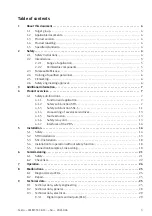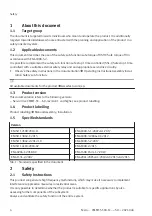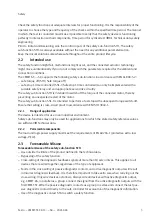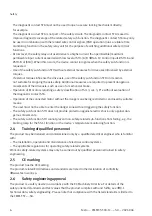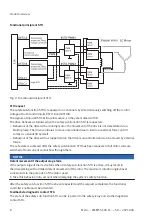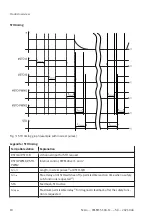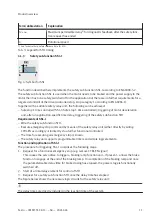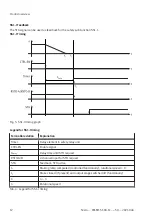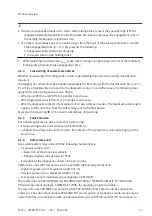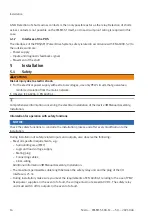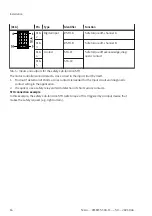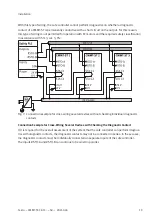
Festo — CMMT-ST-C8-1C-...-S0 — 2021-04b
Product overview
11
Term/abbreviation
Explanation
t
STA,Fall
Maximum permissible delay
1)
for diagnostic feedback after the safety func-
tion request has ended
n
Rotational speed
1) See Technical data, safety reference data for STO
Tab. 3: Legend for STO timing
4.1.3
Safety sub-function SS1-t
Fig. 4: Symbol for SS1
The function described here implements the safety sub-function SS1-t according to EN 61800-5-2.
The safety sub-function SS1 is used when the motor needs to be braked and the power supply to the
motor then has to be safely switched off in the application but there are no further requirements for a
targeted standstill of the drive (controlled stop, stop category 1 according to EN 60204-1).
Together with a suitable safety relay unit, the following can be achieved:
–
Safe stop 1 time controlled (SS1-t/Safe stop 1 time controlled); triggering of motor deceleration
and, after an application-specific time delay, triggering of the safety subfunction STO
Requirements of SS1-t
–
Wire the safety sub-function STO.
–
Execute emergency stop command by means of the safety relay unit (either directly by wiring
CTRL-EN accordingly or indirectly via a further functional controller).
–
The time for executing an emergency stop is known.
–
The safety relay unit supports programmable timers and simple logic elements.
Function and Application of SS1-t
The procedure for triggering SS1-t comprises the following steps:
1. Request for a functional emergency stop (e.g. remove CTRL-EN signal)
This causes the servo drive to trigger a braking ramp function and – if present – allows the brake
function to engage at the end of the braking ramp. On completion of the braking ramp and once
the parameterisable delay time for brake closing has elapsed, the power stage is functionally
switched off.
2. Start of a time-delay element for control of STO
3. Request for a safety sub-function STO once the delay time has elapsed
The figure below shows the necessary logic circuits for the safety relay unit:
The delay times are directly included in the reaction time of the system.



